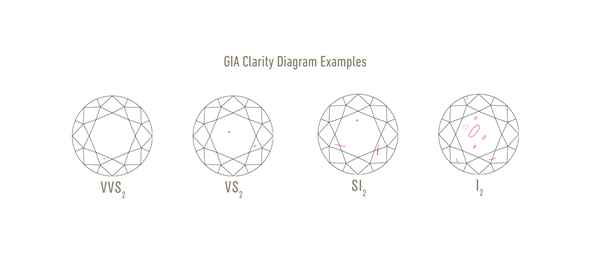How Clarity Affects Price
If you have ever been shopping for diamonds, perhaps looking for engagement rings, you may have noticed that some diamonds are more sparkly than others. This may seem to be true even if the diamonds have the same cut grade. If you look closely, you might notice that the diamonds are not exactly the same even though they have been given the same cut grade.
Have you wondered why this is so? If you were to look at the diamonds under magnification, like a jeweller would, you would notice that the diamonds may differ because one has some slight blemishes that can be seen when you look at them closely. You may not be able to see the blemishes very well with your naked eye but if you look at a diamond under magnification you will be able to see them.
An important factor
One of the biggest determinants to the price of a diamond is the clarity. That should be one of your main concerns when you buy a diamond. Clarity basically tells you how flawless the diamond is. The clarity grade given to a diamond should correspond with the number of flaws that are visible under magnification. The prices for diamonds will vary based on this number. Take, for example, on diamond with one carat of weight with a colour grade of G and a grade of S12 on the diamond clarity scale. Compare that to a diamond of the same size and shape with all other grades being the same except the clarity grade was a VVS1. The second diamond sold for almost $10,000 retail, while the first diamond sold for less than half the price, all because of the increase in clarity rating. 
The process
The diamond clarity scale was introduced in the late 1950s and it takes a great deal of special equipment in order to be done correctly. This specialized equipment makes it possible for the diamond to be lit up and magnified from every possible angle. The person who grades diamonds using this scale must have many years of experience.
Labs who are renowned in the diamond scale grading industry are AGS, EGL, and GIA. They each have their own set of strict protocol which must be used for every diamond that they inspect.
Clarity scales
At the lower end of the clarity scale are the grades I1-I3. The highest end of the scale has a rating of FL which means that there are no flaws visible on the inside of the stone or under the surface of the stone. Stones that are rated as IF, internally flawless, and FL, flawless, are very rare and you can expect to shell out a lot of money for stones such as these in diamond jewellery.



